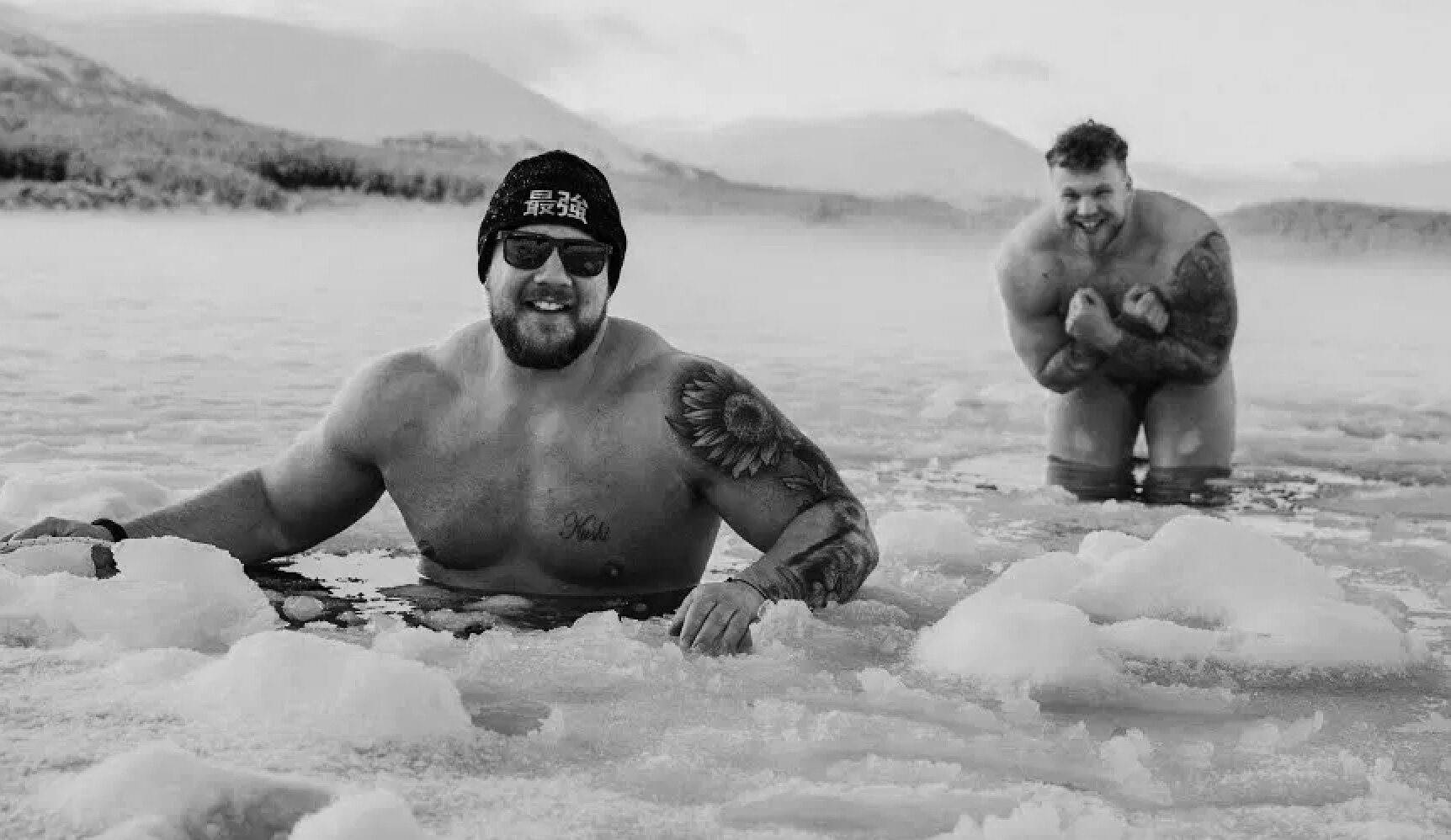
Squat Myth: Can the knees go over the Toes?
Another common squat myth is: KNEES SHOULD NEVER GO OVER THE TOES!
Somehow in the fitness and within some the medical professions some people believe, ‘that the knees should never go past the toes while squatting’. No one knows where this myth started though! The instruction is even a part of the National Strength and Conditioning Associations (NSCA) guidelines for how to teach a proper squat (1). Is it really that dangerous?
Knees over Toes?
When an athlete squats with a poor technique, they often start by driving the knees forward to initiate the squat. As the ankles move it causes the centre of gravity weight to shifted forward onto the balls of the feet. This type of movement problem has been called the “knees first” approach. Squatting this way leads increases the shearing forces on the knee joint and contributes to increased risk of injury and potentially eventually to pain (2).
At first appearance this issue would appear to be a problem of the knee athletes who squat poorly by moving their knees forward often develop knee pain. Therefore limiting forward movement solves the problem? The originators of the cue were probably well-intentioned coaches or physiotherapist trying to rectify this issue. Limiting the knees from moving forward only addresses the symptoms of a bigger problem… BALANCE!

Core strength: Dynamic Core Strength v Core Stiffness
The body's core region is sometimes referred to as the torso or the trunk, (although there are some differences in the muscles identified as constituting them). The major muscles involved in core stability include the pelvic floor muscles, transversus abdominis, multifidus, internal and external obliques, rectus abdominis. The erector muscles of the back such as erector spinae (sacrospinalis) especially the longissimus thoracis, the diaphragm, and the larger muscles that span multiple joints (like the lats and psoas muscles). The glutes are also an important part of the ‘core’. Each and every one of these muscles must coordinate together in order to enhance the stability of the spine

Are ‘Ass to Grass’ squats bad for your knees?
Is ‘Ass to Grass’ squats bad for your knees?
The squat is a corner stone exercise in almost every strength and conditioning program.
However a myth still lingers (deep within the physio world) that deep squats are dangerous to the knees and should never be performed.
There is a range of opinions when it comes to optimum depth of the squat. Some die hard lifts believe in the fable ‘Ass to Grass’ squat that, ‘this is the way.’ While others believe quarter squats are sufficient for functional training such as Dr Joel Seedman.
So what is the optimum depth for a squat?

What is the maximum muscular potential of drug-free athletes?
The bodybuilders and fitness models that appear on the cover of Mens health and bodybuilding magazines serves as poor role models for what’s possible without “assistance”. It’s vital to establish reasonable goals and limits for natural and athletes is important in order to put things into context.

BENCH PRESS GRIP: How Wide?
BENCH PRESS GRIP: How Wide?
Here's what you need to know...
Optimising your grip for a bench press will not only lead to a greater press, but it'll also keep you benching and out of rehab
Simply measure the distance from the outside edge of both acromial processes. Then multiply by 1.5. This is how far apart your hands should be on the bar.
At 1.5 times biacromial width, shoulders are placed at the ideal 45-degree angle of abduction.

Don’t Use Machines, Be the Machine!
Most commercial gyms install machines because they are considered to be ‘safer’ and allow gyms to employ personal trainers who have completed a weekend course and have no coaching experience or creditable strength and conditioning background. They can just about explain how to use the machine ‘safely’ and that just about covers the gyms insurance liability.

Increase Vertical Jump Height with High Box Jumps?
High box jumps get misused when the emphasis is on the height of the box instead of the height of the actual jump. Sounds weird, but here's why:
Start standing next to a high box platform that's the same height as your waist. Now pick up one leg off the ground and flex your hip as high as you possibly can. The distance between the bottom of your foot and the top of the box is the actual height you'd have to jump in order to get on top of that box. The rest comes from hip flexion. Now, if your goal when using high box jumps is to emphasise work on quick hip flexion, that’s ok. But most people are using high box jumps because they want to emphasise explosive jump height. This is where box jumps get misused.

10 Laws of Training: We Can All Learn From Louie Simmons At Westside Barbell
Louie Simmons has set the bar for strength—and strength and conditioning coaches from his invitation-only gym…..Westside Barbell in Columbus, Ohio. Simmons's style of training ties together ideas from scholars, athletes, and coaches from the former Soviet Union and Bulgaria, as well as years of training himself and others.
No matter what age you are or what your goals are we can all learn from Simmons, it doesn’t stop you applying the Westside philosophy and training principles to achieving your objectives.

Sweat is Just Fat Crying (some of it anyway).
Fat cells in humans develop primarily during childhood and puberty. After that, the number of fat cells in your body remains relatively stable. These cells make up adipose tissue, and they can send out hormones into the body to help regulate everything from metabolism to body weight.
Because we generally have a set number of these cells, gaining weight doesn't typically involve making more. Instead, individual cells expand as the digestive system breaks down and stores food for later use, then they shrink when the body turns to the fat cell in a moment of need

CrossFit: The Fast Food of Training
CrossFit is a system of exercise that has rapidly grown in popularity over the last decade, through films such as 300 and the Military using a workout name dedicated to a fallen US Personnel. Marketing itself as the ‘ideal’ training system for everyone from housewives to special forces operators, CrossFit aims to physically prepare people for whatever life may throw at them. It is not about following a particular routine, but about constantly varying workouts.

Understanding the risks involved in training in hot climates (25 °C+) and high humidity
Training in hot weather (over 25 °C) puts extra stress on your body. If you don't take care when exercising in the heat, you risk serious illness. When you training in the heat your body sends more blood to circulate through your skin. This leaves less blood for your muscles (reduction in oxygen), which in turn increases your heart rate. If the humidity also is high, your body faces added stress because sweat doesn't readily evaporate from your skin. That pushes your body temperature even higher. Both the exercise itself and the air temperature and humidity can increase your core body temperature.

Why you shouldn’t do cardio immediately after a strength session!
The number of times I’ve seen people going for a run immediately after a strength session, is countless. They are undoing all the hard work they have just put in.
During strength training you are stimulating the mTOR intracellular signalling pathway, mTOR being the primary pathway for increased protein synthesis and muscular hypertrophy. MTOR signalling intensifies the synthesis of the amino acid chain, increasing protein synthesis and promotes muscle growth. In other words, the chemical signal tells your body to grow and therefore muscles get bigger.
By doing aerobic exercise immediately after a strength session will deregulate the mTOR signalling pathway. All the hard work you put into your strength session to stimulate the mTOR pathway to tell your body to grow and adapt is suddenly turned off and the stimulus from the training is reduced.

Ice After Injury
For years when someone is injured or suffering DOMs you immediately hear ‘put some ice on it’, it’s what many in the medical field have been preaching for decades. Ice is NOT helping the healing process from injury and in fact an overwhelming amount of research shows it does the opposite! Other than temporarily numbing the sensation of pain, ice delays healing and recovery.

Are you still doing static stretch in your warm up?
Static stretch has become ingrained in the psyche of athlete, coaches and personal trainers, with injury prevention and performance enhancement being given as justifications for its inclusion with this mantra repeated parrot fashion or ‘this is what your supposed to do’ and ‘we’ve always done this’. However, there is little, if any, evidence that stretching pre or post training prevents injury. Similarly, in terms of the performance enhancement elements, research suggests that rather than enhance subsequent performance, static stretching can compromise muscle performance.

Ice Baths post-workout…Good or Bad idea?
Athletes around the world are always searching to gain an edge on their competition. Many believe in jumping in a cold ice bath or wrapping some ice packs across their legs after heavy training will help accelerate recovery.
But what does the science say?
When you have a tough session, your muscles sustain tiny amounts of micro-damage. This “trauma” sparks inflammation similar to what happens after an acute injury (like a sprained ankle). The rush of inflammatory cells to the site of “damage” help kick start recovery by first eliminating damaged cells.

Performance At Any Age
So many people believe that when growing old comes, an inevitable decline in strength from being a vibrant individual to sudden feebleness. This includes feeling weak and more scarily… the loss of their independence. These declines may have more to do with lifestyle choices, including sedentary living and poor nutrition than a decline in strength.
If you want to enjoy an active, healthy lifestyle, while maintaining your independence (and able to play with your grandchildren, and hopefully great grandchildren)being active and implementing some form of strength must be a priority and become a habit throughout your life.


